In the world of canine companionship, play is not just a fun activity—it’s a vital part of a dog’s life. And what better way to ignite that playful spirit than with toys that encourage your furry friend to run? Let’s delve into the importance of incorporating running toys into your pup’s playtime and how they can make a significant difference in their health and happiness.
The Joy of Play: Why Dog Toys Are Essential for Happy Pups
The sheer joy that a wagging tail and a gleeful bark can bring to any home is a testament to the simple pleasures in life, and at the heart of these moments is often the playful spirit of a beloved pet. Dogs, with their boundless energy and love for fun, thrive on playtime. This is where dog toys step in, not just as mere accessories, but as essential tools for nurturing a happy and healthy pup.
Play is more than just fun and games; it’s a vital part of a dog’s development. It stimulates their minds, enhances their physical abilities, and strengthens the bond between them and their human companions. A well-chosen dog toy can be the catalyst for endless hours of entertainment, providing a safe and controlled outlet for a dog’s natural instincts to hunt, chase, and explore.
Dogs are predators by nature, and toys that mimic the movements and sounds of prey can trigger their instinctual behavior. This mimicry isn’t just entertaining; it’s also a way for dogs to work through their natural behaviors in a constructive and healthy manner. For example, a toy that bounces, rolls, or makes noise can mimic the unpredictable movements of a real animal, engaging a dog’s hunting drive and encouraging them to use their senses and motor skills.
Moreover, playtime helps in the socialization process for puppies. By interacting with toys, young dogs learn to navigate their environment, develop problem-solving skills, and understand the concept of play. As they grow, these toys can help them maintain their mental agility, which is crucial for preventing cognitive decline as they age.
One of the most significant benefits of play is the physical exercise it provides. Dogs, especially energetic breeds, require regular physical activity to stay fit and healthy. Playing with toys that encourage running and chasing can help them burn off excess energy, maintain a healthy weight, and reduce the risk of obesity-related health issues.
Running toys, in particular, are designed to be engaging and challenging, making them perfect for dogs that need a good workout. These toys often come with moving parts, such as wheels or balls that can be chased, or they can be thrown for a game of fetch. The act of running helps improve a dog’s cardiovascular health, strengthens their muscles, and enhances their coordination.
For owners, observing their dogs running and playing with enthusiasm is a heartwarming sight. It’s not just about the physical benefits, though; it’s also about the emotional connection that is fostered during these moments. Dogs that have regular playtime are often more relaxed and content, which can translate to a calmer household environment.
The joy of play is also a way for dogs to express their emotions. When they’re happy, they play. When they’re excited, they run. When they’re anxious or overstimulated, they might play rough or even become destructive. A good dog toy can provide a constructive way for them to express these feelings, preventing potential behavior problems.
In addition to the physical and emotional benefits, play can also serve as a bonding experience. It’s a time when owners can engage with their dogs, learn about their preferences, and reinforce training. Toys that require teamwork, such as tug-of-war or interactive puzzles, can create a shared experience that strengthens the human-dog relationship.
Choosing the right dog toy is an important decision. It should be safe, durable, and appropriate for the dog’s size, breed, and energy level. For dogs that love to run, selecting a toy that is designed to encourage this behavior can make a significant difference in their overall well-being.
In conclusion, the joy of play is an integral part of a dog’s life. It’s not just about the fun; it’s about the health, happiness, and mental stimulation that play provides. Dog toys, especially those that make them run, are more than just playthings; they are essential tools for nurturing a well-rounded, joyful pup. Whether it’s a simple ball or a complex puzzle, the right toy can make a world of difference in the life of a dog, ensuring that they remain happy, healthy, and endlessly playful.

The Power of Movement: Encouraging Your Dog to Run with Toys
Running is not just a physical activity for dogs; it’s a fundamental part of their nature. Dogs are predators by instinct, and movement is deeply ingrained in their DNA. Encouraging your furry friend to run isn’t just about keeping them healthy; it’s about nurturing their spirit and happiness. Toys play a crucial role in this process, turning exercise into a fun, engaging experience for your dog.
Toys that make your dog run can stimulate their senses, challenge their minds, and provide a sense of accomplishment. When a dog runs, they are not just exercising their bodies but also their minds. This mental stimulation is vital for maintaining a balanced and contented canine life.
One of the primary reasons toys that make your dog run are so effective is because they tap into their natural predatory instincts. Many dogs enjoy chasing, pouncing, and retrieving, and these toys are designed to mimic the excitement of the hunt. By engaging in these activities, dogs are more likely to burn off excess energy, which can lead to better behavior and fewer destructive tendencies.
The Thrill of the Hunt
When a dog is running, their body releases endorphins, the feel-good hormones that contribute to their overall sense of well-being. Toys that encourage running can amplify this effect. For instance, a tug-of-war rope can be a high-energy game that gets both you and your dog up and moving. The chase is on, and your dog’s excitement levels soar as they leap and bound after the rope.
Interactive Play for Cognitive Boost
Interactive toys designed to make your dog run also offer cognitive benefits. Puzzle toys, for example, can be filled with treats or kibble that your dog must move or push out to reach. This not only provides a physical workout but also challenges their problem-solving skills. The mental workout helps keep your dog’s brain active and can slow down the aging process, reducing the risk of cognitive disorders.
The Importance of Variety
Dogs are creatures of habit, but variety is key to maintaining their interest and motivation. Different types of toys can target different aspects of your dog’s physical and mental health. A frisbee can encourage a game of fetch, where your dog will sprint after the disc, while a ball with unpredictable bounce patterns can keep them on their toes, physically and mentally.
Engaging in Running Games
Running games are not just beneficial for your dog’s physical health; they also strengthen the bond between you and your furry companion. Activities like playing fetch or chasing a toy on a leash can be a fun way to spend time together. The joy of seeing your dog’s tail wag as they run and play is a reward in itself.
Safety First
While encouraging your dog to run is important, safety should always be a priority. Make sure your dog has a good fit for their collar or harness and that they are supervised during play. Also, consider the terrain; smooth, grassy areas are ideal for running games, as they are less likely to cause injuries than hard surfaces.
The Benefits of Regular Exercise
Regular running can improve your dog’s cardiovascular health, strengthen their muscles, and help maintain a healthy weight. It also helps with joint health and can reduce the risk of obesity-related health issues. For senior dogs, running can help maintain mobility and reduce arthritis symptoms.
Incorporating Running into Daily Life
Incorporating running into your dog’s daily routine doesn’t have to be complicated. Even a short walk or run around the block can make a difference. Consistency is key; make exercise a regular part of your day. You might even consider dog sports like agility or flyball, which offer structured running and playtime.
Monitoring Your Dog’s Fitness
Pay attention to your dog’s body language and energy levels. They should be able to run at a comfortable pace without panting excessively or showing signs of distress. If you notice any changes in their behavior or health, it may be time to adjust their exercise routine.
The Social Aspect of Running
Dogs are social animals, and running with other dogs can be incredibly beneficial. Dog parks and playgroups provide opportunities for your dog to run, play, and interact with other canines. This social interaction can improve your dog’s mood and overall well-being.
The Long-Term Impact
By encouraging your dog to run with toys, you’re not just providing a short-term boost of energy; you’re investing in their long-term health and happiness. The positive effects of regular exercise can last a lifetime, ensuring that your dog remains a healthy, vibrant member of your family.
In conclusion, the power of movement through running with toys is undeniable. It’s a way to keep your dog’s body and mind in top condition, strengthen your bond, and provide a lifetime of joyful memories. Whether it’s a simple game of fetch or a complex obstacle course, the right toy can make a world of difference in your dog’s life.
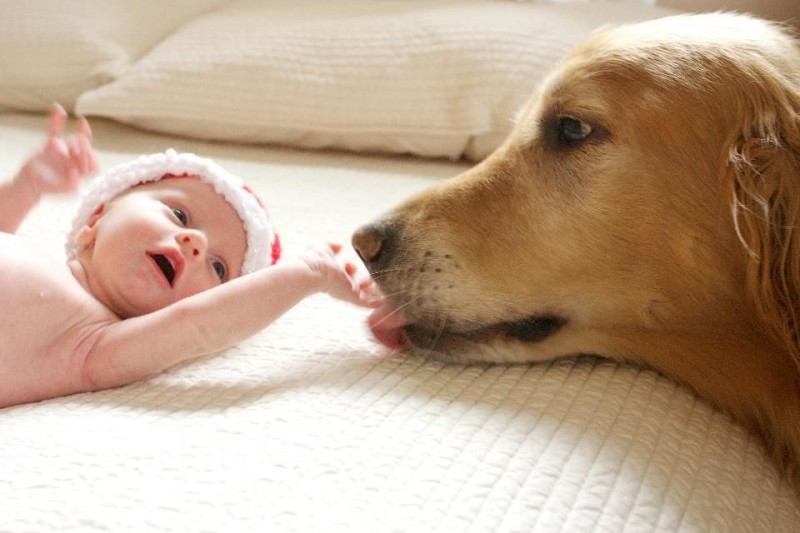
Interactive Toys That Spark Endless Fun and Exercise
Interactive toys aren’t just for fun; they’re a powerhouse of activity for your furry friend. Here’s how these engaging playthings can ignite a storm of exercise and joy in your dog’s life.
Dogs are natural predators, and their instincts tell them to chase, pounce, and retrieve. Interactive toys tap into this innate desire, transforming playtime into a workout. Think about a puzzle toy that hides treats—your dog will have to sniff, paw, and turn to uncover the hidden treasure, all while getting those wagging tails in motion.
The thrill of the hunt is real with toys like the “Tug of War” rope or the “Squeaky Squirrel.” These toys mimic the excitement of the great outdoors, encouraging your dog to leap, bound, and run in pursuit of the prize. The physical exertion is invaluable, helping to maintain a healthy weight and muscle tone.
Many interactive toys are designed with durability in mind, which means they can withstand the vigorous play that comes with a rambunctious dog. The “Roly-Poly Ball” or “Fishing Rod” with multiple attachments can be thrown, pulled, and shaken, providing endless entertainment and exercise opportunities.
Not all dogs are the same, and that’s where the variety of interactive toys comes into play. Some dogs love the challenge of a “Treat Dispenser” that requires them to move the toy to release snacks, while others might be more drawn to the sound and movement of a “Blinking Toy.” These variations ensure that every dog, regardless of breed or energy level, can find a toy that suits their play style.
For the visually stimulated, there are toys that light up or have reflective strips, like the “Flashy Stick” or “LED Ball.” These toys can capture your dog’s attention during play, encouraging them to run and chase after the light, which is both entertaining and beneficial for their eye coordination.
The mental stimulation that comes with interactive toys is just as important as the physical exercise. Toys like the “Agility Tunnel” or “Hide and Seek” ball require your dog to think and strategize, which can be a great way to prevent boredom and keep their minds sharp.
Interactive toys also offer a fantastic bonding experience. Engaging with your dog during play can strengthen your relationship, and it’s a great way to teach them new commands or tricks. You can incorporate training sessions with these toys, making exercise time a dual-purpose activity.
Many interactive toys are also versatile, meaning they can be used both indoors and outdoors. This versatility ensures that your dog can enjoy their playtime rain or shine, snow or sun, adding to the convenience and fun.
For dogs that tend to be more sedentary, interactive toys can be a game-changer. They can motivate even the laziest of pups to get up and move, which is crucial for their overall health and well-being. Regular exercise can improve heart health, boost their immune system, and even help with digestion.
Incorporating interactive toys into your dog’s routine can also have a calming effect. When your dog is physically and mentally engaged, they’re less likely to exhibit destructive behaviors or suffer from separation anxiety. This can lead to a happier, more contented pet.
Finally, interactive toys can be a great way to keep your dog’s teeth clean and healthy. Toys designed for chewing, like the “Dental Stick” or “Chew Toy,” can help scrape away tartar and reduce the risk of dental disease.
In summary, interactive toys are a fantastic tool for encouraging your dog to run and play. They provide a wealth of physical exercise, mental stimulation, and bonding opportunities, all while being fun for both you and your furry friend. Whether you choose a classic rope toy or a high-tech puzzle, the key is to find something that resonates with your dog’s unique personality and preferences. With the right interactive toy, you’ll be on your way to a happier, healthier, and more active pup.
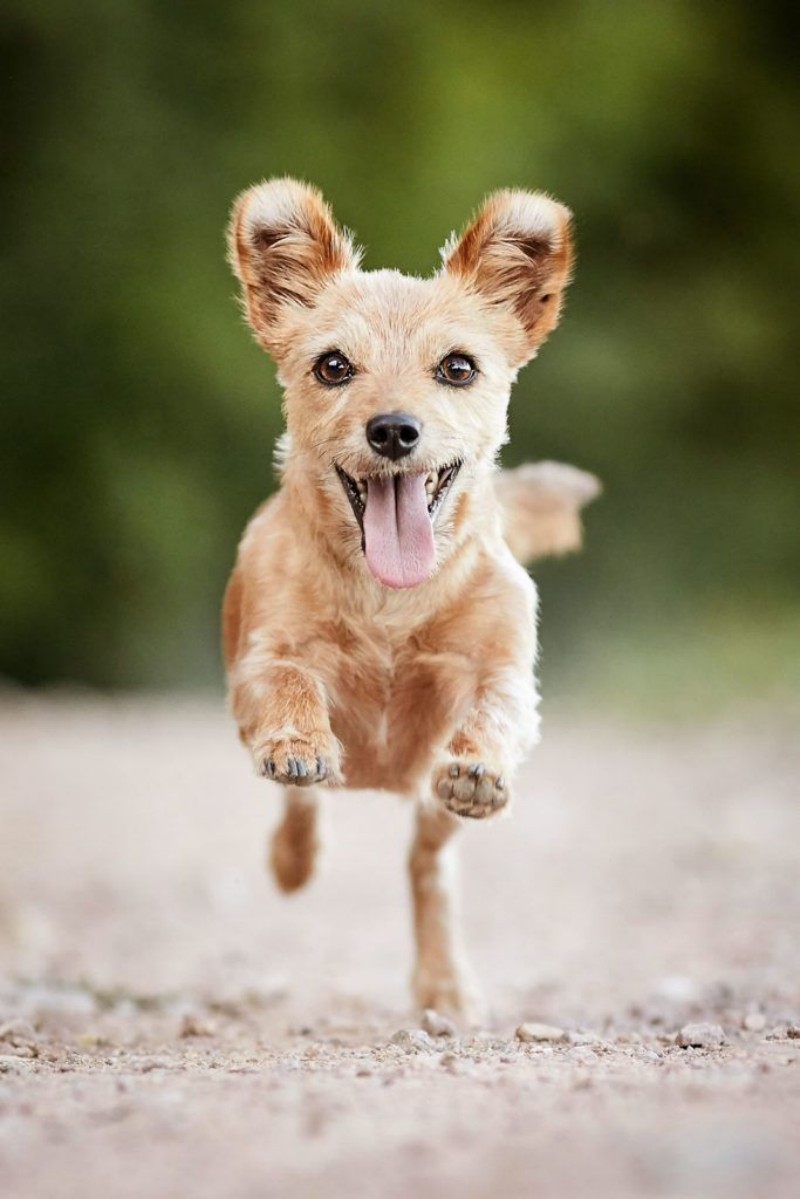
Design Features That Make Them Run: What to Look for in a Dog Toy
Dog toys come in a myriad of shapes, sizes, and materials, each designed to engage a dog’s natural instincts and behaviors. When selecting a toy to encourage your furry friend to run, there are several key design features to consider that can transform a simple plaything into a high-octane workout device. Here are some of the elements to look for:
1. Vibrations and SoundsVibrating toys often have a significant impact on a dog’s enthusiasm. The subtle hum or rattle inside can stimulate your dog’s senses, prompting them to chase and shake the toy vigorously. Additionally, toys with sounds, like beeps or jingles, can attract a dog’s attention and motivation, leading them to run and play for longer periods.
2. Tethered and Pull-Back DesignsTethered toys are a fantastic way to encourage physical activity. These can be attached to a rope or a string, allowing your dog to pull and tug while you’re holding the other end. The motion can be incredibly stimulating and can mimic the natural behavior of chasing after a squirrel or other small animal. Pull-back toys, which require the dog to pull them back to launch them forward, also offer a great running workout as they engage the dog’s body and mind.
3. Bright Colors and PatternsBright and bold colors are hard to resist for most dogs. Toys that feature contrasting colors or patterns can stand out in the yard or during playtime, making them more appealing to chase. A dog’s natural hunting instincts can be triggered by these visual cues, leading to a higher likelihood of running and pouncing to retrieve the toy.
4. Squeaky and Stretchy ComponentsThe classic squeaky toy is a staple for many dogs, and for good reason. The noise it makes can be irresistible, causing your dog to bite down and shake it vigorously. Stretchy toys, like rubber bands or durable fabrics, can be stretched and pulled, encouraging dogs to bend, twist, and run to get ahold of the toy. This not only provides physical exercise but also stimulates their sense of play and hunting.
5. Weighted ElementsToys that have weighted elements, such as small weights or water-filled sections, can add resistance to the playtime. When a dog runs and tosses a weighted toy, it becomes a more challenging task, as the toy’s weight makes it harder to move. This resistance can encourage your dog to increase their running speed and stamina, turning a simple toss into a full-blown workout.
6. Shape and TextureThe shape and texture of a dog toy can also influence how much running and exercise it inspires. Toys with uneven surfaces or textures can require more effort to pick up or hold, prompting your dog to move more. A ball with a unique shape or a rope toy with various knots can offer a new challenge that dogs will want to tackle, leading to increased activity levels.
7. Durable MaterialsDogs are not just gentle playmates; they can be quite rough with their toys. Look for toys made from durable materials like sturdy rubber, heavy-duty canvas, or resilient plastics. A toy that can withstand a lot of wear and tear will last longer and provide more opportunities for running and play.
8. VersatilityA versatile toy can be used in various ways, which means your dog will have more reasons to run. For example, a toy that can be thrown, pulled, and chewed on will encourage different types of activity. The more uses a toy has, the more it will stimulate your dog’s mind and body.
9. Interactive PlayInteractive toys that require a bit of thought or strategy can be incredibly engaging for dogs. Toys that hide treats or require a dog to manipulate them to reveal food or toys can be a fun way to get them moving. These puzzles can be as simple as a ball with a compartment that holds treats or as complex as a multi-level maze that a dog must navigate.
10. Safety FeaturesFinally, always consider the safety of the toy. Ensure that no small parts can be easily torn off or swallowed, and that the toy is non-toxic. Safety is paramount, and a toy that your dog can enjoy without risk of injury will be more likely to encourage healthy exercise.
By focusing on these design features, you can select a dog toy that not only provides fun but also gets your pup up and running, promoting a happier, healthier lifestyle.
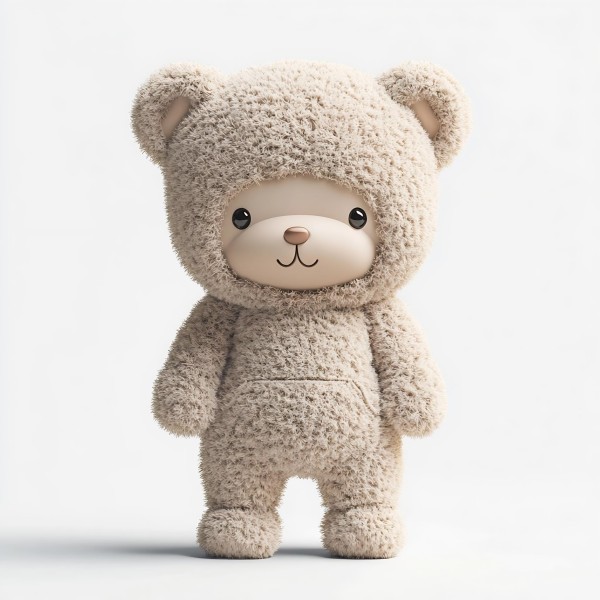
Top Picks for Dog Toys That Inspire Running and Playfulness
In the world of canine play, there are toys that are not just fun but also encourage your furry friend to get up and move. Here are some top picks that are guaranteed to inspire running and endless playfulness:
1. The Tug of War Classic: A Timeless Toy for Energetic PupsA classic rope toy is a staple in many dog’s toy collection. The texture is irresistible, and the tug-of-war game is a fantastic way to get your dog running around. Look for a sturdy rope that won’t easily break, with knots or rings that won’t come loose, ensuring safe play.
2. The Chuckit! Fetch Toy: A Game of Endless RetrievalFor dogs who love to fetch, the Chuckit! ball is a game-changer. Its unique design allows it to travel further and bounce higher than a regular ball, encouraging your dog to run after it time and time again. The variety of sizes and materials means you can find one that suits your dog’s preferences and play intensity.
3. The Squeaky Disc: A Chirping Companion for Playful ChasesA squeaky disc is a great toy for dogs who are drawn to sound. The high-pitched squeak is almost irresistible, and the disc’s aerodynamic shape makes it perfect for throwing and catching. It’s not uncommon to see a dog running in circles, trying to catch their own toy, which adds an extra layer of fun.
4. The Interactive Ball with Holes: A Puzzle That Gets Paws MovingFor dogs who are smart and need a challenge, an interactive ball with holes can be a hit. These balls are designed to roll in unpredictable ways, encouraging your dog to chase after them. The holes also allow for treats to be hidden inside, adding an element of puzzle-solving to the mix.
5. The Hide and Seek Treat Dispenser: A Playful Feeding ExperienceThis toy isn’t just for exercise; it’s also a fun way to feed your dog. The treat dispenser has compartments that hide kibble or treats, and your dog will have to move, turn, and manipulate the toy to get to their snack. It’s a great way to combine feeding time with physical activity.
6. The Flappy Bird Toy: A Fluttering Friend for Fast ChasesThis toy mimics the movement of a bird, fluttering and flapping as it moves. It’s a fantastic motivator for dogs who are naturally curious and enjoy chasing moving objects. The unpredictable flight pattern means your dog will be running and zigzagging to keep up.
7. The Treat-Dispensing Squeaky Bone: A Combination of Chewing and RunningFor dogs who love to chew, a treat-dispensing squeaky bone is a win-win. They can gnaw on the bone while also chasing the hidden treats. This toy is especially good for dogs who need to work on their jaw strength while getting a good workout.
8. The Ball with a Surprise: A Pop-up PlaythingSome balls come with a surprise inside, like a small plush toy that pops out when the ball is thrown. This creates a unique experience for your dog, as they’ll be motivated to chase the ball to see what happens next. It’s a great way to keep their attention and encourage running.
9. The Hideaway Ball: A Toy with a TwistThis ball has a hollow center that can hide a small toy or treat. When the ball is thrown, the hidden item falls out, creating a new plaything for your dog. It’s a simple yet effective way to extend the playtime and encourage your dog to run.
10. The Doggy Teeter-Totter: A Balance Beam for Running FunFor dogs who are agile and enjoy a challenge, a doggy teeter-totter is a great choice. It’s a balance beam that moves side to side, requiring your dog to run and maneuver to stay balanced. It’s a fun way to get your dog’s body and mind working together.
Each of these toys is designed to engage your dog’s natural instincts and encourage physical activity. Whether it’s the thrill of the chase, the satisfaction of solving a puzzle, or the simple joy of being a part of a game, these toys are sure to inspire running and playfulness in your four-legged friend. Remember, the best toys are those that not only entertain but also promote a healthy lifestyle for your canine companion.
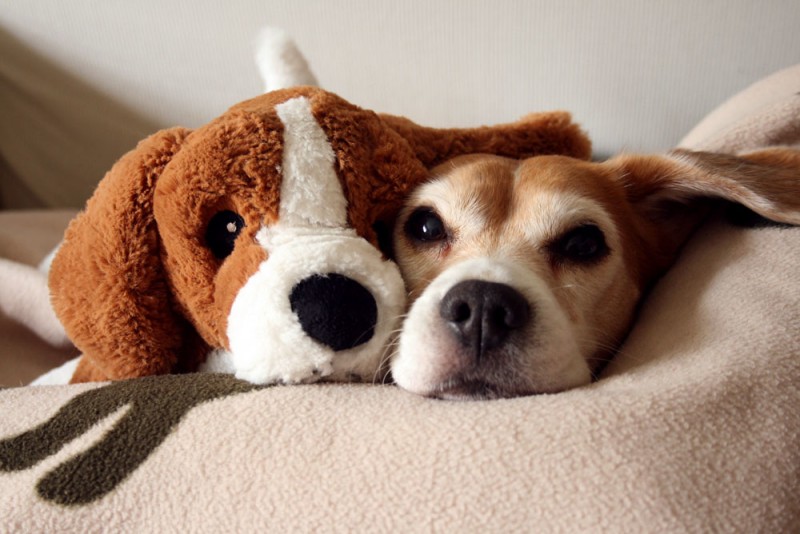
How to Integrate These Toys into Your Dog’s Daily Routine
Finding the perfect balance between your dog’s daily routine and playtime is crucial for their overall well-being. Here are some creative ways to seamlessly incorporate interactive toys that encourage running and playfulness into your furry friend’s daily life:
Dedicate Playtime SessionsInstead of sporadic playtimes, establish regular play sessions. Consistency is key to keeping your dog engaged and looking forward to these moments. Whether it’s in the morning, during lunch, or in the evening, setting a routine helps your dog anticipate the fun to come.
Utilize Outdoor SpacesTake advantage of your backyard or local parks to create an environment where your dog can run freely. Use these spaces to introduce new toys and encourage your dog to explore and move around. The change of scenery can make playtime even more exciting.
Incorporate Exercise with ToysCombine your dog’s physical activity with their toys. For instance, if you have a ball-throwing toy, use it to get your dog to run after it. This not only provides exercise but also mental stimulation as your dog works to retrieve the toy.
Interactive Toys for IndoorsWhen you’re stuck indoors, there are still plenty of options to keep your dog active. Puzzle toys that require your dog to figure out how to get to the treat inside can be a great indoor workout. These toys can keep your dog’s mind engaged while they move around to solve the puzzle.
Use Treat- dispensing ToysTreat-dispensing toys are a fantastic way to encourage your dog to move. Fill them with kibble or small treats and let your dog’s natural instinct to sniff and chew drive them to run and play. This can be especially effective during mealtime, turning their daily routine into a fun activity.
Create a Toy RotationDogs can get bored with the same toys day after day. Rotate your dog’s toys to keep things fresh and exciting. Introduce new toys periodically, and watch as your dog’s enthusiasm for playtime grows.
Incorporate Games with ToysTurn playtime into a game. Use a tug-of-war toy and playfully engage in a game of pull and release. This not only gets your dog running but also strengthens the bond between you. You can also play hide-and-seek with your dog’s favorite toys, making them work a bit harder to find them.
Teach New TricksCombine training with play by teaching your dog new tricks using their favorite toys. This can be a great way to challenge your dog’s mind while also providing physical activity. For example, you can teach your dog to run and fetch a toy before sitting down or lying down to earn a treat.
Monitor Your Dog’s HealthAlways be mindful of your dog’s health and energy levels. If your dog is elderly or has any health issues that limit their mobility, opt for toys that are easier to manipulate and don’t require too much running. The goal is to keep your dog happy and healthy, not to overexert them.
Stay InvolvedEngage with your dog during playtime. This doesn’t mean you have to be the one running around; it’s about being present and interacting with your dog. Sometimes, just sitting on the ground and playing with a toy can be enough to stimulate your dog’s natural instincts to move and play.
Keep an Eye on SafetyAlways supervise your dog when they’re playing with toys, especially if they’re new or have small parts. This ensures that your dog can enjoy their toys without any risk of injury.
Adapt as NeededYour dog’s interests and needs may change over time. Be adaptable and willing to switch up the toys and activities that keep them running and playing. This flexibility will help maintain their enthusiasm and keep their routine fresh and engaging.
By thoughtfully integrating these interactive toys into your dog’s daily routine, you can help ensure that they stay active, healthy, and happy. Remember, the key is to keep playtime fun and engaging, while also respecting your dog’s physical limits and preferences.
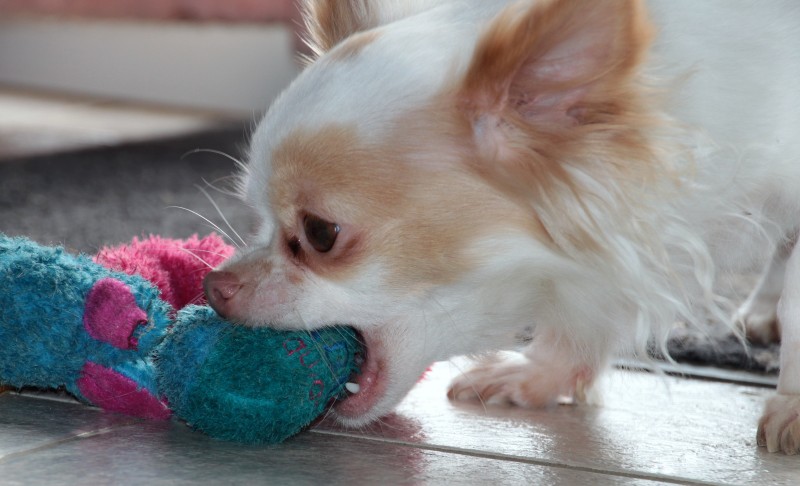
The Health Benefits of Running for Dogs
Running is a vital part of a dog’s life, offering more than just exercise; it’s a cornerstone of their overall well-being. Here are the myriad health benefits that come with regular running for our four-legged friends:
Endurance and StrengthRegular running helps build up a dog’s endurance and muscle strength. Just like humans, dogs need to condition their bodies to run longer distances and at a faster pace. This physical activity strengthens their heart, lungs, and muscles, making them more capable of handling physical challenges and playtime activities.
Weight ManagementMaintaining a healthy weight is crucial for dogs, just as it is for humans. Running aids in weight management by burning calories and increasing metabolism. It’s especially beneficial for breeds that are prone to obesity, as it helps keep their weight in check and reduces the risk of health issues associated with excess weight, such as joint problems and heart disease.
Mental StimulationRunning isn’t just good for physical health; it’s also excellent for a dog’s mental health. The act of running stimulates their brain, providing them with a mental workout. It helps to keep their minds engaged and can prevent boredom and destructive behaviors. The world is a new playground when running, filled with new sights, sounds, and smells that stimulate curiosity and alertness.
Improved Joint HealthDogs, like humans, can suffer from joint issues such as arthritis. Running is a low-impact exercise that can actually help improve joint health. It’s easier on the joints than high-impact activities like jumping or sprinting. Regular running can increase flexibility and reduce the stiffness that comes with age or joint conditions.
Enhanced DigestionPhysical activity, including running, can boost a dog’s digestive system. It helps to keep their bowels moving and can prevent constipation or other digestive issues. The increased movement stimulates the digestive tract and can lead to a more regular and healthy digestive process.
SocializationRunning with your dog is not only good for their physical and mental health but also for socialization. Dogs often encounter other dogs and people while out for a run, which can help them learn appropriate social behavior. It’s an opportunity for them to practice greeting others, playing safely, and understanding pack dynamics.
Boosted Immune SystemRegular exercise has been shown to strengthen the immune system in both humans and dogs. Running helps to keep the body’s immune defenses strong, which can protect your dog against illnesses. It’s a natural way to keep them healthier and reduce the likelihood of frequent vet visits.
Increased Energy LevelsMany dog owners notice that their pets have higher energy levels after a run. This isn’t just because they’ve burned off some excess energy; it’s also because exercise releases endorphins, the body’s natural mood lifters. Dogs who run regularly tend to be more content and less prone to destructive or anxious behaviors.
Bonding TimeRunning with your dog is also a great way to bond. It creates a shared experience where both you and your dog can focus on the activity at hand. This shared activity can deepen your connection, making the time spent together more meaningful and enjoyable.
Reduction in Anxiety and StressExercise is a well-known stress reliever, and dogs are no exception. Running can help reduce anxiety and stress in dogs, especially those who are prone to separation anxiety or have had a rough past. The repetitive motion and the focus on the run can be calming and grounding.
Improved SleepPhysical activity, including running, can help dogs fall asleep more easily and enjoy deeper sleep. A tired dog is often a happy dog, and regular exercise can lead to more restful nights for both you and your furry friend.
LongevityStudies have shown that dogs who engage in regular exercise, including running, tend to live longer and have fewer age-related health issues. Keeping your dog active throughout their life can significantly contribute to their longevity and quality of life.
In conclusion, running offers a multitude of health benefits for dogs, from enhancing their physical fitness to improving mental well-being. It’s an essential part of a balanced lifestyle for our canine companions, and the joys of running are as boundless as the trails they explore.
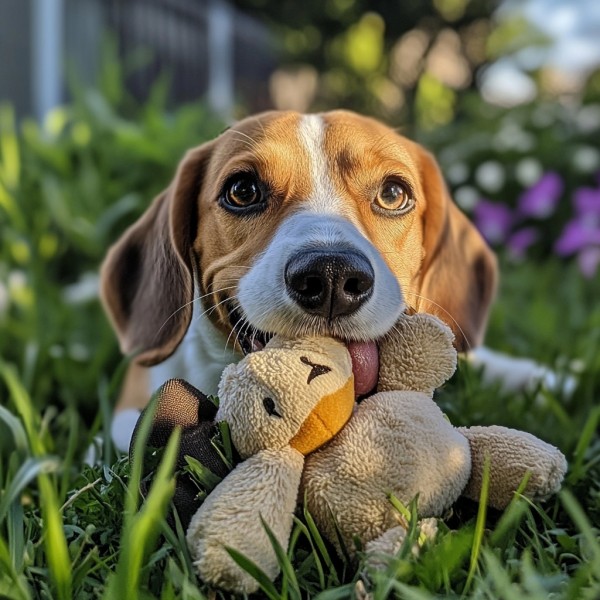
Final Thoughts: Choosing the Right Dog Toy to Make Them Run
In the world of dog toys, finding the perfect one to ignite your furry friend’s inner runner can be a game-changer. A toy that not only entertains but also encourages physical activity is a win-win for both you and your pup. Here are some final thoughts on selecting the right dog toy to make them run:
Consider the Size and Strength of Your DogThe size and strength of your dog are crucial factors when choosing a running toy. A toy that’s too small may easily be destroyed, while one that’s too large might not be as engaging. A medium-sized dog might enjoy a sturdy tug-of-war rope, whereas a larger breed could relish a heavy-duty ball that’s tough enough to withstand energetic play.
Durability is KeyDurability is a non-negotiable when it comes to dog toys designed for running. The toy should be made from high-quality materials that can withstand the wear and tear of intense play sessions. Look for toys with reinforced stitching, sturdy handles, and resilient materials like rubber or heavy-duty plastic.
Engage Their SensesA toy that engages your dog’s senses can make running sessions more enjoyable and stimulating. Think about toys that make noise, like a toy with a bell or a squeaker, or those that have different textures. A toy with a mix of sounds and textures can keep your dog’s attention and encourage them to run and explore.
Interactive Elements for Mental StimulationInteractive toys that require your dog to think and work for their rewards are fantastic for both physical and mental exercise. Look for toys with puzzles, treat dispensers, or moving parts that your dog can manipulate. These toys not only get your dog up and running but also keep their brain engaged, reducing the likelihood of boredom and destructive behavior.
Safety Always Comes FirstSafety should be at the forefront of your toy selection. Avoid toys with small parts that can be swallowed or choked on. Toys with sharp edges or toxic materials should also be avoided. Always inspect toys regularly for any signs of wear and tear that could pose a risk to your dog’s safety.
Adaptability to Your Dog’s PreferencesEvery dog is unique, and what one dog loves, another might ignore. Pay attention to your dog’s preferences and adaptability. Some dogs might be drawn to a specific type of toy, like a ball or a frisbee, while others might prefer a toy that mimics the hunt, like a tug toy or a plush animal with a squeaker. Observing your dog’s play style can help you choose a toy that will be a hit.
Regular Rotation of ToysKeeping a variety of toys on hand and rotating them can help maintain your dog’s interest and prevent boredom. Regularly introducing new toys or bringing out toys that have been stored away can reignite your dog’s excitement and encourage them to run and play more.
Incorporate Play into RoutineTo make running toys a regular part of your dog’s routine, incorporate playtime into their daily schedule. Whether it’s during a morning walk, after work, or during a break from training sessions, having a consistent playtime can help your dog associate running with joy and routine.
Monitor Their Activity LevelsIt’s important to keep an eye on your dog’s activity levels, especially if they’re a high-energy breed. Running toys should be used in moderation to prevent overexertion, especially in hot weather or if your dog has any health concerns. Monitor their behavior and physical condition to ensure they’re not pushing themselves too hard.
Remember, the right dog toy can be a powerful tool in encouraging your dog to run and stay active. It’s about finding that perfect blend of fun, challenge, and safety that will keep your furry companion happy and healthy. With the right toy, you can turn playtime into a daily workout, promoting a lifetime of good health for your beloved canine companion.
